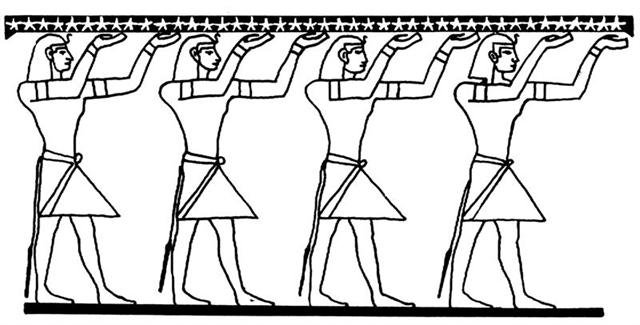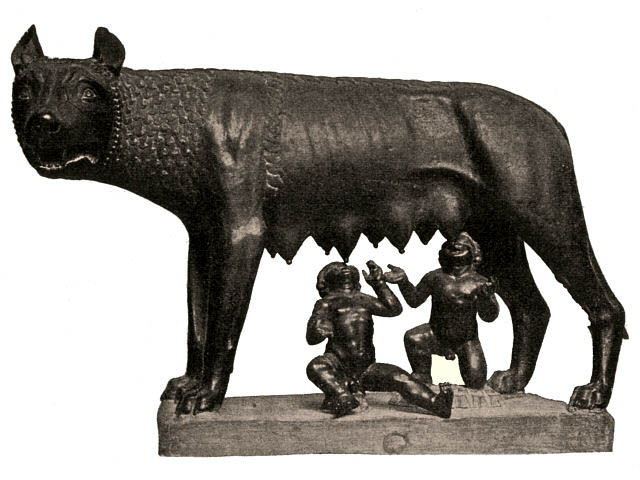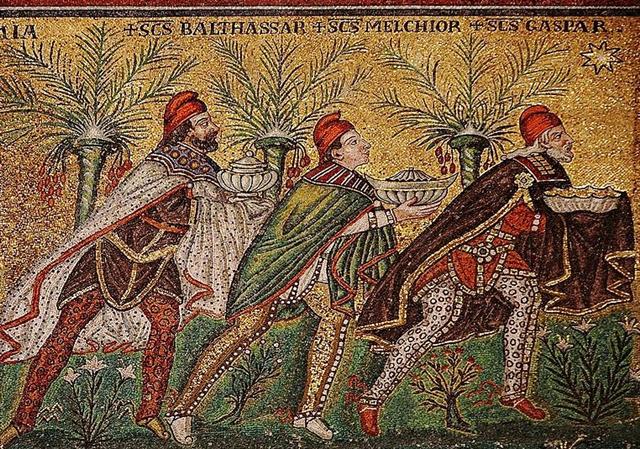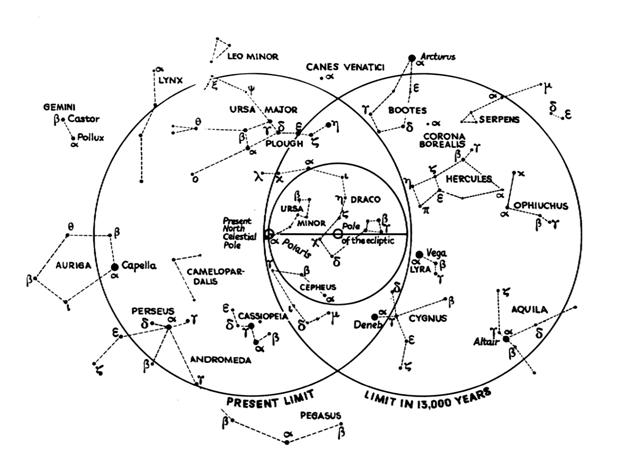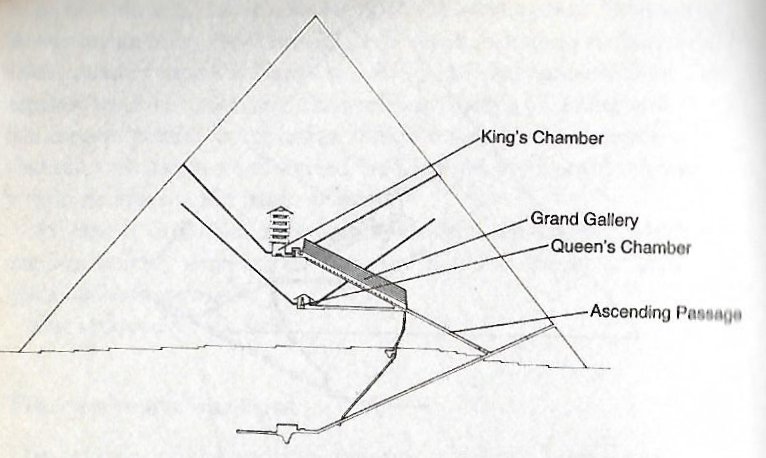264. There was a fishhook at Sirius and it occurred twice in a year:
Presumably this pair of fishhook signs in the G text referred to how the change from ebb to high tide (and back again) was a bi-cycle - it occurred twice a day.  The letters of the alphabet were created by Thoth, the Moon god, and he should therefore be regarded as responsible also for the tides. 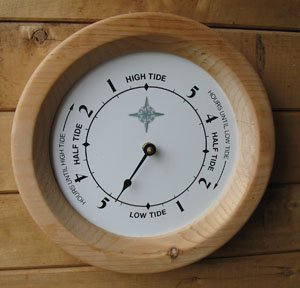 There were twice 12 hours in a diurnal cycle. ... Much of this book has been peopled with the inhabitants of a Star Menagerie of profoundly meaningful animal characters. The forms of animal life have varied from the Fishes who turned into hairy Twins to the remarkable succession of doglike creatures occurring around the world from Ireland to Yucatán. All of these animals have been of great significance, and each was invested with key functions in cosmological myth. It would be possible, for example, to prepare a most informative edition of the Romance of Reynard Fox illustrated entirely with reproductions from Egyptian and Mesopotamian ritual documents. For it is likely that these documents represent the last form of international initiatic language, intended to be misunderstood alike by suspicious authorities and the ignorant crowd. In any case, the language forms an excellent defense against the kind of misuse which Plato speaks about with surprising earnestness in Phaedrus (274D-275B). At the point in question, Thot/Hermes is feeling very proud of himself for having invented letters, and he claims that the alphabet will make the Egyptians wiser and improve their memory. Plato has the god Thamus, 'king of all Egypt', speak to him: 'Most ingenious Thoth', said the god and king Thamus, 'one man has the ability to beget arts, but the ability to judge of their usefulness or harmfulness to their users belongs to another; and now you, who are the father of letters, have been led by your affection to ascribe to them a power the opposite of that which they really possess. For this invention will produce forgetfulness in the minds of those who learn to use it, because they will not practise their memory. Their trust in writing, produced by external characters which are no part of themselves, will discourage the use of their own memory within them. You have invented an elixir not of memory, but of reminding; and you offer your pupils the appearance of wisdom, not true wisdom, for they will read many things without instruction and will therefore seem to know many things, when they are for the most part ignorant and hard to get along with, since they are not wise, but only appear wise.' Now that Plato's apprehensions have become fact, there is nothing left of the ancient knowledge except the relics, fragments and allusions that have survived the steep attrition of the ages ... I think the texts on the C and G tablets also were such ritual documents which represented 'the last form of international initiatic language'. ... In later research it was postulated that the [Phoenician] alphabet is actually two complete lists, the first dealing with land agriculture and activity, and the second dealing with water, sea and fishing ... The first half beginning with Alef - an ox, and ending with Lamed - a whip. The second list begins with Mem - water, and continues with Nun - fish, Samek - fish bones, Ayin - a water spring, Peh - the mouth of a well, Tsadi - to fish, Kof, Resh and Shin are the hook hole, hook head and hook teeth, known to exist from prehistoric times, and the Tav is the mark used to count the fish caught ...
The beginning of the G tablet seems to correspond to Ayin, the water spring:
Viz. with the Eye of the Bull (ε Tauri),
from where indeed the male (rain) waters from heaven ought to originate, the spring of sweet water which makes Mother Earth fruitful again:
... There was no water in the village. The lakes and rivers were dry. Raven and Crow, two young girls who were having their first menstrual courses, were told to go and draw water from the ocean. Finding the journey too long, Raven decided just to urinate into her basket-bucket. She decieved no one and was severly scolded. Crow returned much later but with drinking water. As a punishment, Raven was condemned never to find water in the summer; only in winter would she find something to drink. For that reason the Raven never drinks during the hot months; she speaks with a raucous voice because of her dry throat ... Crow went to the source of sweet water and 'the ocean' was up in the sky. And, we remember, there was also a lazy girl who made a gift to her father by shooting into the navel of the sea: ... A man had a daughter who possessed a wonderful bow and arrow, with which she was able to bring down everything she wanted. But she was lazy and was constantly sleeping. At this her father was angry and said: 'Do not be always sleeping, but take thy bow and shoot at the navel of the ocean, so that we may get fire.' The navel of the ocean was a vast whirlpool in which sticks for making fire by friction were drifting about. At that time men were still without fire. Now the maiden seized her bow, shot into the navel of the ocean, and the material for fire-rubbing sprang ashore. Then the old man was glad. He kindled a large fire, and as he wanted to keep it to himself, he built a house with a door which snapped up and down like jaws and killed everybody that wanted to get in. But the people knew that he was in possession of fire, and the stag determined to steal it for them. He took resinous wood, split it and stuck the splinters in his hair. Then he lashed two boats together, covered them with planks, danced and sang on them, and so he came to the old man's house. He sang: 'O, I go and will fetch the fire.' The old man's daughter heard him singing, and said to her father: 'O, let the stranger come into the house; he sings and dances so beautifully.' The stag landed and drew near the door, singing and dancing, and at the same time sprang to the door and made as if he wanted to enter the house. Then the door snapped to, without however touching him. But while it was again opening, he sprang quickly into the house. Here he seated himself at the fire, as if he wanted to dry himself, and continued singing. At the same time he let his head bend forward over the fire, so that he became quite sooty, and at last the splinters in his hair took fire. Then he sprang out, ran off and brought the fire to the people ... Gardiner's A28 meant both to be in high spirits and to mourn - to get an arrow in the eye was surely fatal:
... Dante kept to the tradition of the whirlpool as a significant end for great figures, even if here it comes ordained by Providence. Ulysses has sailed in his 'mad venture' beyond the limits of the world, and once he has crossed the ocean he sees a mountain looming far away, 'hazy with the distance, and so high I had never seen any.' It is the Mount of Purgatory, forbidden to mortals. 'We rejoiced, and soon it turned to tears, for from the new land a whirl was born, which smote our ship from the side. Three times it caused it to revolve with all the waters, on the forth to lift its stern on high, and the prow to go down, as Someone willed, until the sea had closed over us.' The 'many thoughted' Ulysses is on his way to immortality, even if it has to be Hell. The engulfing whirlpool belongs to the stock-in-trade of ancient fable. It appears in the Odyssey as Charybdis in the straits of Messina - and again, in other cultures, in the Indian Ocean and in the Pacific. It is found there too, curiously enough, with the overhanging fig tree to whose boughs the hero can cling as the ship goes down, whether it be Satyavrata in India, or Kae in Tonga ...
The position of this whirlpool in the sky should not be very far from Sirius and possibly it was right above the outstretched front paw of the White Tiger:
Presumably the father of Tae-tagaloa went down here in his journey from one land to another: ... There is a couple residing in one place named Kui and Fakataka. After the couple stay together for a while Fakataka is pregnant. So they go away because they wish to go to another place - they go. The canoe goes and goes, the wind roars, the sea churns, the canoe sinks. Kui expires while Fakataka swims. Fakataka swims and swims, reaching another land. She goes there and stays on the upraised reef in the freshwater pools on the reef, and there delivers her child, a boy child. She gives him the name Taetagaloa. When the baby is born a golden plover flies over and alights upon the reef. (Kua fanau lā te pepe kae lele mai te tuli oi tū mai i te papa). And so the woman thus names various parts of the child beginning with the name 'the plover' (tuli): neck (tuliulu), elbow (tulilima), knee (tulivae) ... The name of the rainbird (Tuli) was used for the main parts of the newborn Not-tagaroa and the name of his father was Tui - the son will resemble his father: ... The father does not disappear, but goes on being fulfilled. Neither dimmed nor destroyed is the face of a lord, a warrior, craftsman, an orator. Rather, he will leave his daughters and sons. So it is that I have done likewise through you. Now go up there on the face of the earth; you will not die. Keep the word. So be it, said the head of One and Seven Hunaphu - they were of one mind when they did it ... The name of his mother was Fakataka (Haka-taka) which means to complete a cycle:
The name Kui (Tui) was probably referring to the 3 stars in the center of Orion,
i.e. to the 3 heaps of broken stones which 16 days later would turn up again at the beginning of the new circuit (year): ... The star [Thuban] could be seen, both by day and night, from the bottom of the central passage of the Great Pyramid of Cheops (Knum Khufu) at Ghizeh, in 30° of north latitude, as also from the similar points in five other like structures; and the same fact is asserted by Sir John Herschel as to the two pyramids at Abousseir ...
|
|||||||||||||||||||||||||||||||||||||||||||||||||||||||||||||||||||||||||||||||||||||||||||||||||||||||||||||||||||||||||||||||||||||||||||||||||||||||||||||||||||||||||||||||||||||||||||||||||||||||||||||||||||||||||||||||||||||||||||||||||||||||||||||||||||||||||||||||||
















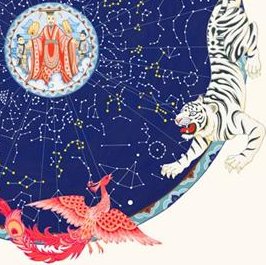

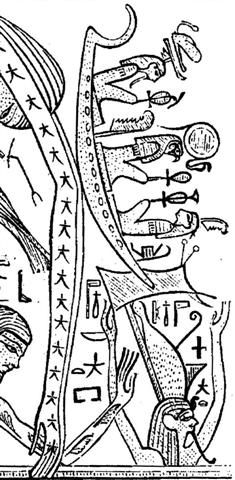

.jpg)
